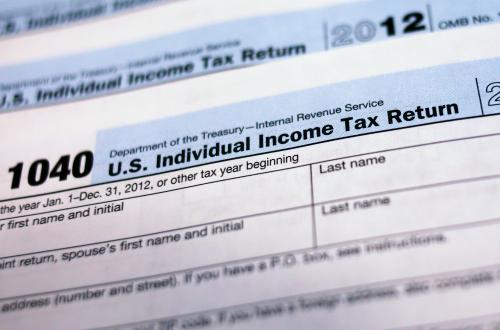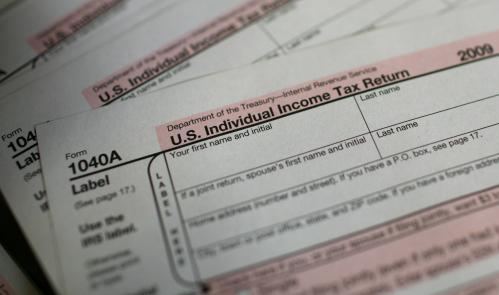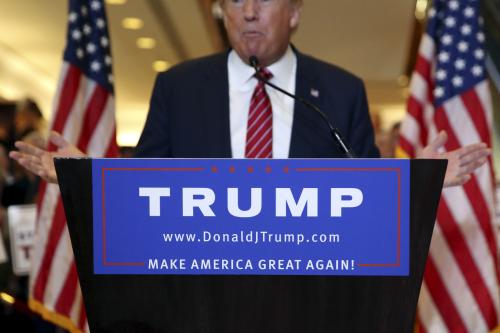After a recent Facebook Live with my colleague Molly Reynolds, we got to talking about the political science books and articles we regularly recommend. So, here’s my reading list to understand the contemporary tax debate in Washington.
First lesson: the top-heavy tax cuts on the policy agenda today are not the natural outcome of a widely held antipathy to taxation, or an admiration for wealthy people that is sometimes ascribed to the American public. Americans are more willing to pay taxes and are more concerned about economic inequality, than you might think.
One of the best books on the subject is Class War? What Americans Really Think about Economic Inequality, by Benjamin Page and Lawrence Jacobs. This book shows that Americans are philosophical conservatives, but operational liberals. Americans like the idea of ‘small government,’ but when it comes to actual policies, large majorities of Americans are supportive of the major government interventions in education, health care, employment, retirement—and even a majority of Republicans are willing to pay more in taxes to support these programs.
I would also highly recommend Leslie McCall’s The Undeserving Rich: American Beliefs about Inequality, Opportunity, and Redistribution which demonstrates that Americans are very and increasingly concerned about economic inequality and that they do not believe America currently provides fair opportunities to everyone.
All of this should lead you to wonder why we’re discussing a tax bill that gives huge breaks to the wealthy and corporations as a part of a budget process proposing large cuts to popular programs. That brings us to our second lesson: politicians’ policy priorities are not determined by public opinion; they are determined by interests that have organized themselves to exert power within the party system.
This plays out in two ways.
First, tax cuts have defined the Republican Party since the Reagan era, a policy commitment that is part of a broader backlash against the civil rights movement and the resulting extension of representation and public goods to African-Americans. To understand the origins of the anti-tax fervor that gripped the Republican Party starting in the late 1970s, read “Chain Reaction: The Impact of Race, Rights and Taxes on American Politics,” by Thomas Byrne Edsall and Mary D. Edsall. In this book, the authors demonstrate that tax cuts were coupled rhetorically with welfare opposition, which was in turn motivated by racist stereotypes about undeserving poor people. Martin Gilens demonstrates that racialization of fiscal policy compellingly in his book, Why Americans Hate Welfare. Since that time, tax cuts have become a central—perhaps the central—policy position of the Republican Party. With unified control in Washington and a dwindling electoral base, this year is a critical opportunity for the party to enact this portion of its agenda.
Second, tax cuts for the rich have been pushed forward by concerted campaigns by the wealthy, as Isaac Martin explains in Rich People’s Movements: Grassroots Campaigns to Untax the 1%. Martin’s key insight is explaining how wealthy people managed to build broader constituencies for their tax cuts: by channeling frustration about other aspects of the tax code into support for policies that mostly cut rates at the very top.
How is this sleight of hand possible? In part, because tax policy is confusing, average citizens can be misled about the impact of tax legislation. Jacob Hacker and Paul Pierson describe this dynamic in their book Off Center; the second chapter of that book looks specifically at how the Bush tax cuts were designed to be superficially appealing while disguising long-term costs.
There is some good news, however; at least in surveys, Americans have shown themselves capable of responding to information about tax policy by updating their views. Suzanne Mettler’s The Submerged State describes how citizens often underestimate the regressive effects of policies like the Home Mortgage Interest Deduction, but when provided with better information, change their attitudes. Similarly, John Sides has shown that giving people information about who pays the estate tax increases support for the tax, especially among lower-income Republicans.
So, what’s the takeaway? We can’t explain the tax reform on the table in Washington by looking at the preferences of most Americans. Instead, the impetus for top-heavy tax cuts comes from organized interests working strategically to disguise the regressive effects of the policies they have proposed, or by connecting their big-business-friendly policies with cultural and ethnic resentments that continue to motivate large swathes of the voting public. Better information would help, but in our contemporary media environment, many people will not encounter the facts that would help them connect their values to the policy proposals being debated in Congress.










Commentary
Required reading to understand the tax policy fight
November 13, 2017